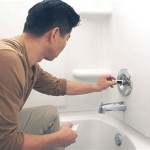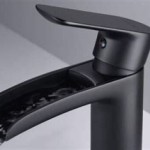Used Bathroom Vanity Sinks: A Practical Guide to Selection and Installation
A bathroom vanity sink is a crucial element in any bathroom, serving both functional and aesthetic purposes. Replacing a bathroom vanity sink can significantly improve the look and usability of a bathroom, often at a lower cost than a complete bathroom renovation. Opting for a used vanity sink presents an even more economical solution, allowing homeowners to upgrade their bathrooms while adhering to a strict budget. This article provides a comprehensive overview of selecting and installing used bathroom vanity sinks.
Evaluating the Condition of Used Bathroom Vanity Sinks
Prior to purchasing a used bathroom vanity sink, a thorough inspection is crucial. Potential buyers must meticulously evaluate the sink's condition to ensure its functionality and longevity. This evaluation should encompass several key areas.
Firstly, examine the sink for cracks, chips, or significant scratches. These defects can compromise the structural integrity of the sink and potentially lead to leaks. Minor surface imperfections are often acceptable, especially if they are purely cosmetic and do not affect the sink's function. However, larger or deeper cracks should be a cause for concern and may indicate a sink that is nearing the end of its lifespan.
Secondly, assess the condition of the drain assembly. Check for rust, corrosion, or mineral buildup around the drain. These issues can impede water flow and make future repairs more difficult. Ideally, the drain assembly should be relatively clean and free of significant corrosion. If the drain appears excessively corroded, consider the cost of replacing it, as this will need to be factored into the overall budget.
Thirdly, if the used vanity sink includes a faucet, inspect its condition as well. Check for leaks around the base of the faucet or from the spout. Ensure that the faucet handles turn smoothly and that there are no signs of corrosion or damage. Replacing a faulty faucet can add to the overall cost, so it is essential to factor this in when assessing the value of the used vanity sink.
Fourthly, consider the material of the sink. Common materials include ceramic, porcelain, cast iron, stainless steel, and stone. Each material has its own advantages and disadvantages. Ceramic and porcelain are relatively durable and easy to clean, but they can chip or crack. Cast iron is very durable but can be heavy and susceptible to rust. Stainless steel is resistant to rust and stains, but it can be prone to scratches. Stone sinks, such as granite or marble, are aesthetically appealing but require more maintenance and can be porous.
Finally, evaluate the overall cleanliness of the sink. A dirty sink may indicate neglect and could potentially harbor bacteria or mold. While a thorough cleaning can often restore a used sink to a presentable condition, it is important to assess the level of effort required to clean it and any potential hidden issues that may be lurking beneath the surface grime.
Considerations for Selecting the Right Size and Style
Choosing the appropriate size and style of a used bathroom vanity sink is vital for ensuring both functionality and aesthetic harmony within the bathroom space. Careful consideration should be given to the existing bathroom layout, the overall design scheme, and the desired user experience.
Size is a primary concern. Measure the dimensions of the existing vanity or the space where the new vanity sink will be installed. Ensure that the used sink fits comfortably within this space, allowing enough room for plumbing connections and comfortable use. A sink that is too large may overwhelm the space, while a sink that is too small may not provide sufficient functionality. Consider the depth of the sink as well, as a shallower sink may be more suitable for smaller bathrooms.
Style is another critical factor. Vanity sinks come in a variety of styles, including undermount, drop-in (self-rimming), vessel, and pedestal. Undermount sinks are installed beneath the countertop, creating a seamless look. Drop-in sinks are installed from above, with a rim that rests on the countertop. Vessel sinks sit on top of the countertop like a bowl, offering a unique and stylish look. Pedestal sinks are freestanding and do not require a vanity cabinet, making them ideal for small bathrooms.
The choice of style should complement the overall design of the bathroom. For example, an undermount sink may be a good choice for a modern or contemporary bathroom, while a vessel sink may be more suitable for a bohemian or artistic bathroom. Consider the existing fixtures and finishes in the bathroom, such as the faucets, showerheads, and tile, to ensure that the new sink blends seamlessly with the existing design elements.
In addition to size and style, consider the number of bowls required. Single-bowl sinks are suitable for smaller bathrooms or for individuals who prefer a minimalist approach. Double-bowl sinks are ideal for larger bathrooms or for couples who prefer to have their own separate sinks. The choice of single or double bowl will depend on the available space and the personal preferences of the users.
Finally, consider the storage needs of the bathroom. A vanity sink with integrated storage, such as drawers or cabinets, can provide valuable space for storing toiletries, towels, and other bathroom essentials. This can help to keep the bathroom organized and clutter-free. If storage is a priority, look for used vanity sinks that offer ample storage space.
Essential Steps for Installing a Used Bathroom Vanity Sink
Proper installation is essential for ensuring the functionality and longevity of a used bathroom vanity sink. While professional installation is often recommended, homeowners with basic plumbing knowledge and experience can often install a used sink themselves, following careful and methodical steps.
Firstly, gather the necessary tools and materials. These typically include a wrench, pliers, screwdriver, putty knife, plumber's putty, Teflon tape, a level, and safety glasses. It is also essential to have appropriate safety gear, such as gloves, to protect hands from potential hazards.
Secondly, disconnect the water supply to the existing sink. Turn off the shut-off valves located beneath the sink. If there are no shut-off valves, turn off the main water supply to the house. Once the water supply is shut off, disconnect the water supply lines from the faucet. Place a bucket beneath the sink to catch any residual water.
Thirdly, disconnect the drainpipe from the sink drain. This may involve loosening nuts or screws that hold the drainpipe in place. Be prepared for some water to drain out of the pipe, so have a bucket ready to catch it. Once the drainpipe is disconnected, remove the old sink from the vanity cabinet.
Fourthly, clean the countertop surface where the new sink will be installed. Remove any old putty or sealant. Ensure that the surface is clean and dry before proceeding. If necessary, use a putty knife to scrape away any stubborn residue.
Fifthly, apply plumber's putty to the underside of the new sink's drain flange. This will create a watertight seal between the drain flange and the sink. Insert the drain flange into the drain opening and tighten the nut from below. Be careful not to overtighten the nut, as this could damage the sink.
Sixthly, install the faucet onto the new sink. Follow the manufacturer's instructions for installing the faucet. Typically, this involves inserting the faucet through the faucet holes in the sink and tightening the nuts from below. Connect the water supply lines to the faucet.
Seventhly, place the new sink into the vanity cabinet. Ensure that the sink is properly aligned and that it sits securely on the countertop. If necessary, use shims to level the sink. Once the sink is in place, connect the drainpipe to the sink drain. Tighten all connections securely.
Eighthly, turn on the water supply and check for leaks. Carefully inspect all connections for any signs of water leakage. If any leaks are detected, tighten the connections until the leaks are stopped. It is crucial to address any leaks promptly to prevent water damage.
Finally, caulk around the perimeter of the sink where it meets the countertop. This will create a watertight seal and prevent water from seeping under the sink. Use a high-quality silicone caulk that is specifically designed for bathrooms. Smooth the caulk with a wet finger or a caulk smoothing tool to create a clean and professional finish.

Vama Factory 36 Inch Width Used Bathroom Vanity Cabinets With Marble Top And Single Sink In Foshan 538036 China

Hotel S Used Bathroom Vanity Mirror Cabinet Set Modern Double Marble With Sink China Made In Com

Repurposed Dresser Converted To Bathroom Vanity Reinvented Delaware

Bathroom Vanity Styles To Fit Your Space Forbes Home

Stunning Bathroom Tour Dresser Into Double Vanity

Turn A Vintage Dresser Into Bathroom Vanity

Antique Server Used As A Bathroom Vanity Shabby Chic Rustic Shelves Vanities

Bath Vanity Morris Habitat For Humanity Re

20 Best Small Bathroom Ideas With Paint And Storage Inspiration

Repurposed Furniture As A Diy Bathroom Vanity At Home With Ashley
Related Posts







